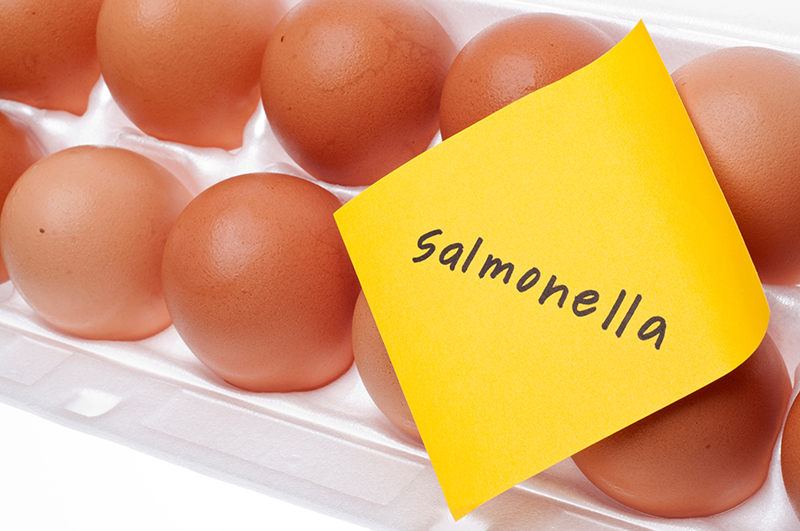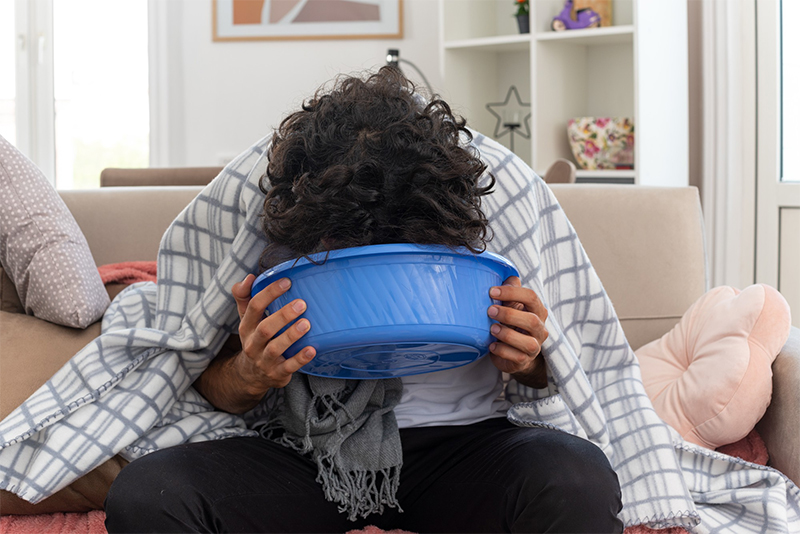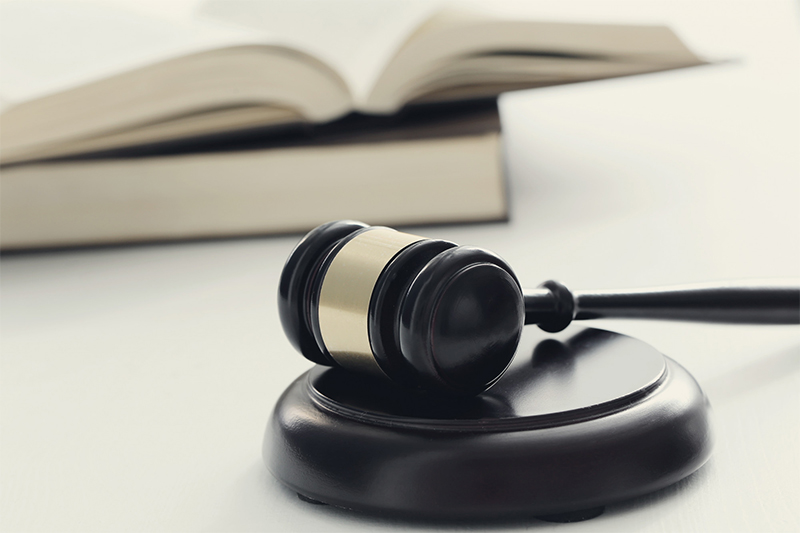Are You Aware of the Risks Associated With Salmonella Food Poisoning?
Salmonella food poisoning is a severe illness that can cause fever, diarrhea, and abdominal cramps.
The bacteria can contaminate raw or undercooked poultry, raw meat, and unpasteurized milk. Cross-contamination can also occur when food is prepared on surfaces or with utensils that have come into contact with raw meat or eggs.
According to the Centers for Disease Control and Prevention’s (CDC) salmonellosis outbreak report, salmonella bacteria are responsible for approximately 1.35 million infections, 26,500 hospitalizations, and 420 deaths in the United States annually. [1]
Let’s explore salmonella food poisoning together, examining its symptoms, your rights in cases of salmonella food poisoning, and potential liability for your suffering.
What is Salmonella Food Poisoning?
Salmonella infection, also known as salmonellosis, is a prevalent bacterial foodborne illness that affects the intestinal tract. The bacteria reside in the intestines of animals and humans and are excreted through feces. Most people become infected through consumption of contaminated water or food. [2]
There are two salmonella species: S. enterica and S. bongori, with S. enterica being the predominant cause of salmonella infection in humans. The symptoms of salmonella poisoning include diarrhea, fever, and abdominal cramps, which typically begin 8 to 72 hours after infection. [2]
This foodborne infection typically lasts for a duration of 4 to 7 days; however, there are cases where some individuals may not develop symptoms until several weeks after infection, while others may experience symptoms for an extended period. [3]
Salmonella strains can sometimes lead to infections in the urine, blood, bones, joints, or the nervous system, such as the spinal fluid and brain, potentially resulting in severe illness.

How Does Salmonella Contaminate Food?
Salmonella can cause food contamination in several ways. Here are some common routes of contamination:
- Animal Origin: Salmonella often resides in the intestines of animals, such as poultry, cattle, pigs, and reptiles. Contamination can occur during the butchering process when the bacteria from the intestines come into contact with the raw meat’s surface.
- Cross-Contamination: When raw or undercooked meat, poultry, and their juices come into contact with ready-to-eat foods or cooking surfaces without proper cleaning, it can spread salmonella.
- Infected Handlers: Food can be contaminated by infected food handlers who don’t wash their hands properly after using the restroom. It can occur in restaurants or any place where food is prepared.
- Contaminated Water: Water contaminated by sewage or animal waste can be a source of salmonella. It can be used to irrigate crops or to clean food items, resulting in the spread of bacteria.
- Raw Produce: Salmonella can also be present in fruits and vegetables if they come into contact with contaminated soil, water, or animal feces during growth or harvesting.
Common Symptoms of Salmonella Food Poisoning
Foodborne pathogens like salmonella is a diverse and adaptable bacterium that can cause a range of symptoms and health concerns. Following are some common symptoms:
- Abdominal Cramps
- Blood in the stool
- Diarrhea
- Fever
- Headache
- Nausea
- Vomiting
If you suspect you have Salmonella food poisoning, it’s essential to stay hydrated by drinking plenty of fluids and, in severe cases, seek medical attention for proper diagnosis and treatment.

Who is Most Likely to Get a Salmonella Infection?
Salmonella infection can affect anyone who consumes contaminated food or water, but certain groups are more susceptible or at a higher risk of developing severe symptoms:
- Young Children: Children under the age of 5 have immune systems that are still developing, making them more vulnerable to infections like salmonella.
- Elderly Individuals: As people age, their immune systems may weaken, increasing their susceptibility to infections and making fighting illnesses like salmonella more challenging.
- Pregnant Women: Pregnancy can alter the immune system, making pregnant women more susceptible to infections. Salmonella can also pose risks to the fetus.
- Immunocompromised Individuals: Those with weakened immune systems due to conditions such as HIV/AIDS, cancer, or undergoing treatments like chemotherapy are at higher risk of severe complications from salmonella infections.
- Those With Chronic Illnesses: People with chronic conditions such as diabetes, kidney disease, or liver disease might be more prone to severe symptoms if infected with salmonella.
- Travelers: Travelers visiting regions with poor sanitation or inadequate food handling practices may be at a higher risk of contracting salmonella due to contaminated food or water exposure.
When Should Consider Legal Action for Salmonella Food Poisoning?
You must consider several key factors when contemplating legal action for salmonella food poisoning.
- A confirmed diagnosis linking the illness to Salmonella, obtained through medical records and professional diagnosis, forms the foundation for a potential case.
- Severe health impacts from hospitalization, ongoing medical care, or long-term health complications necessitate seeking legal advice to recover expenses and potential future costs.
- There should be evidence of a specific source of contamination, such as a food product or establishment, and negligence or misconduct in handling or preparing food is evident. Pursuing legal recourse becomes a viable option to hold those responsible accountable and seek compensation for losses.

Determining Legal Liability of Salmonella Food Poisoning
Improper food handling, poor sanitation practices, and contaminated farm products such as eggs, meat, and dairy can cause salmonella contamination in food. Responsible parties for Salmonella food poisoning can include manufacturers, retailers, distributors, and restaurants serving contaminated food.
Determining legal liability for salmonella food poisoning can involve various factors and considerations. Here are some key points often taken into account:
- Establishing Contamination Source: Proving that the food consumed was contaminated with salmonella is significant. It involves tracing the source of the contamination, typically through epidemiological investigations by health authorities or laboratory testing of samples.
- Negligence or Breach of Duty: If a party, such as a restaurant, food manufacturer, distributor, or retailer, fails to follow proper food safety protocols, leading to salmonella contamination, it could be considered negligence or a breach of duty. It could involve improper food handling, inadequate sanitation, or failure to meet regulatory standards.
- Proximate Cause: Demonstrating that the contaminated food was the proximate cause of the illness is essential. It often involves establishing a direct link between the specific food consumed and the onset of salmonella symptoms.
- Documentation: Documenting the damages and harm caused by the salmonella infection is vital in legal proceedings. It includes medical bills, lost wages due to illness, pain and suffering, and any long-term health complications resulting from the infection.
- Statutory Compliance: Compliance with food safety regulations and standards is essential. Businesses in the food industry are expected to adhere to these regulations to prevent contamination and ensure consumer safety. Any failure to comply could strengthen a case against them.
- Prevention Measures: Evidence demonstrating that reasonable steps were taken to prevent contamination can also be a factor. It includes maintaining proper hygiene, implementing food safety protocols, regular inspections, and staff training.
Challenges involved in filing a food poisoning lawsuit include proving causation, gathering evidence of negligence, and navigating complex legal processes.
Contact Goldberg & Loren’s personal injury lawyers who will help you pursue the appropriate legal action. Book a no-obligation consultation today!
Sources:
[1] About salmonella infection. (2024, October 4). Salmonella Infection (Salmonellosis). https://www.cdc.gov/salmonella/about/?CDC_AAref_Val=https://www.cdc.gov/salmonella/general/index.html
[2] Salmonella infection – Symptoms & causes – Mayo Clinic. (2022, April 29). Mayo Clinic. https://www.mayoclinic.org/diseases-conditions/salmonella/symptoms-causes/syc-20355329
[3] Symptoms of salmonella infection. (2024, October 4). Salmonella Infection (Salmonellosis). https://www.cdc.gov/salmonella/signs-symptoms/index.html

